Organization and conduct of walks in kindergarten Goals, objectives, types of walks. Requirements for the sanitary condition of the site, the time spent in the fresh. - presentation
Organization and conduct of walks in kindergarten Goals, objectives, types of walks. Requirements for the sanitary condition of the site, the time spent in the fresh air, as well as the organization of preschoolers for a walk Prepared by: Educator Kurmaeva Marina Viktorovna
Goals and objectives of a walk in a preschool institution A walk is a very important moment in the life of children in a preschool institution. The purpose of the walk is to improve health, prevent fatigue, physical and mental development of children, restore the functional resources of the body that have been reduced in the process of activity. The tasks of the walk: to have a hardening effect on the body in natural conditions; to promote the level of physical fitness of preschool children; optimize the motor activity of children; to promote the cognitive-speech, artistic-aesthetic, social-personal development of children. Types of walks (at the venue): On the site of the Institution; Target walks Excursions
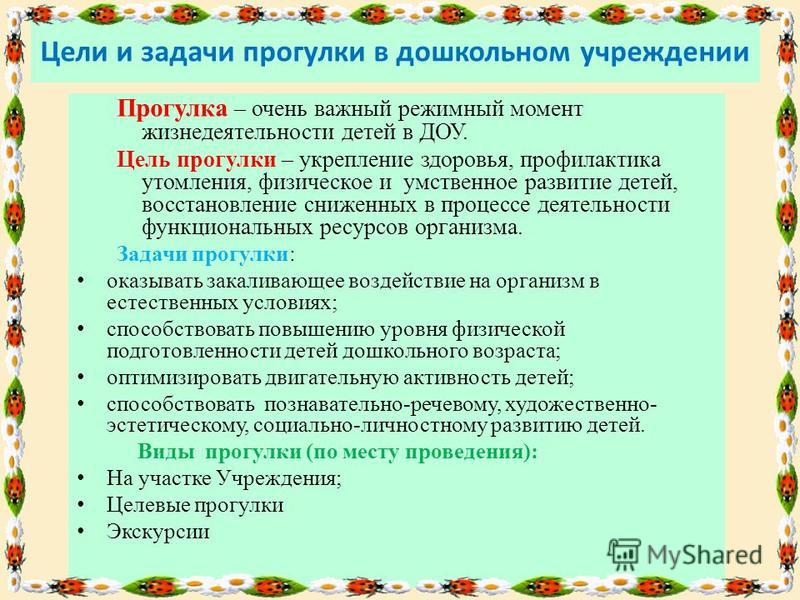
Requirements for preparing and returning from a walk Before going on a walk, the teacher organizes hygiene procedures with the children: cleaning the nose, visiting the toilet room. Dressing and undressing children in preparation for and returning from a walk is necessary according to subgroups: Stages of preparation for a walk. the educator takes the first subgroup of children to the waiting room for dressing, which includes slowly dressing children, children with low self-care skills the assistant educator conducts hygiene procedures with the second subgroup and takes the children to the reception educator goes for a walk with the first subgroup of children, and the assistant educator finishes dressing the second subgroups and escorts the children to the site to the teacher to help with dressing in each group of early and younger preschool age employees from among the working and medical staff of the preschool educational institution are assigned to children with poor health, it is recommended to dress and take them outside with the second subgroup, and start from a walk with the first subgroup .

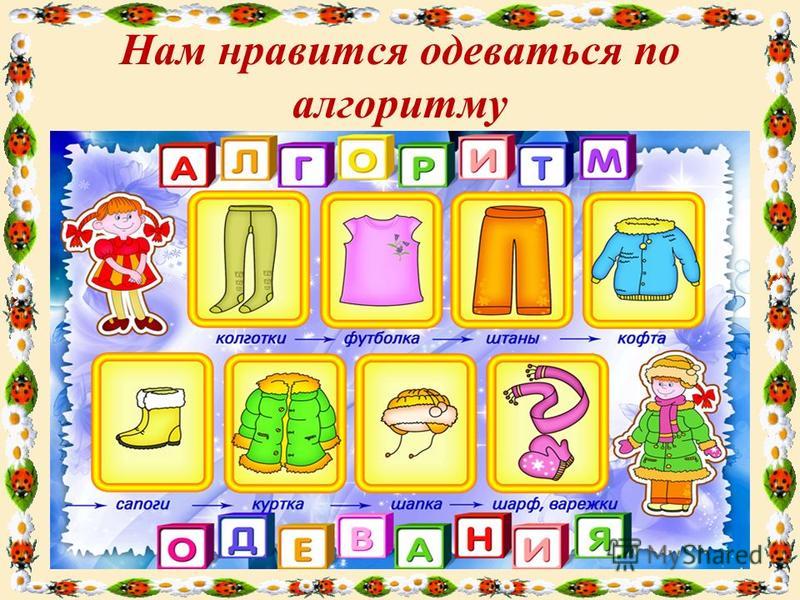
Requirements for children's clothing At any time of the year, clothes and shoes must correspond to the weather at the moment and should not contribute to overheating or hypothermia of children; With temperature fluctuations from +3 to -3 ° C and light wind, children's clothing should consist of three layers, including underwear. Outerwear consists of a warm jacket, trousers or gaiters; warm boots on the feet; At temperatures from -4 to -10 ° C, children wear a winter jacket or down jacket with three layers of clothing. At lower temperatures, it is recommended to increase the number of layers of clothing to four or five, depending on the thermal properties of the outer clothing. In summer, children wear light hats to avoid overheating. Recommendations for hardening should be placed in the corner for parents, corresponding to the age of the children and the time of year. Encourage parents not to overheat the child, dress children according to weather conditions.
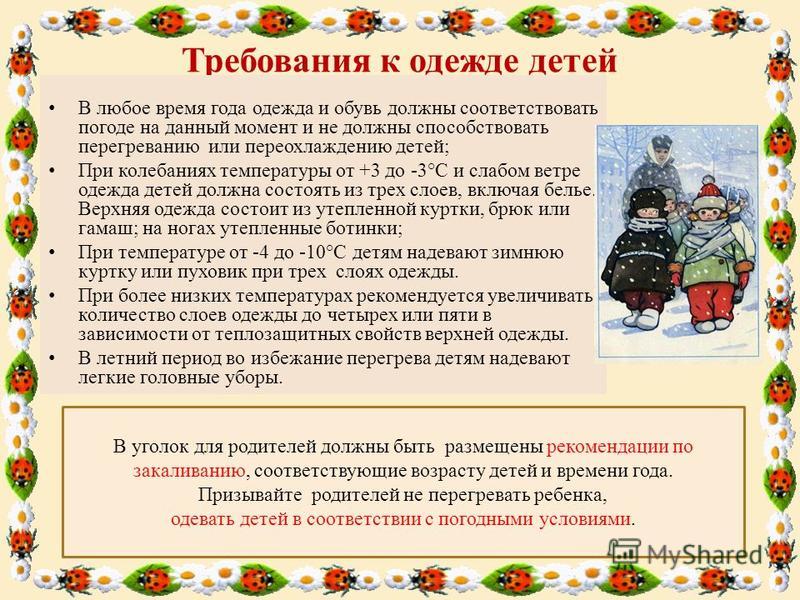
Requirements for the content of walks on the site of the preschool educational institution The walk should consist of the following structural elements observation; physical activity: mobile, sports games, sports exercises; individual work in various areas of development of pupils; work assignments independent activities of children

The sequence of structural components of the walk may vary depending on the type of previous activity. If the children were in a lesson that required increased cognitive activity and mental stress, then at first outdoor games, jogging are carried out, then observations. If there was a physical or musical activity before the walk, the walk begins with observation or a quiet game. Each of the mandatory components of the walk lasts from 7 to 15 minutes and is carried out against the background of independent activities of children. The content of the walks is determined by the program to familiarize children with the environment, taking into account the previous activities of children, pedagogical and recreational tasks, and is built in accordance with the calendar planning in each age group.
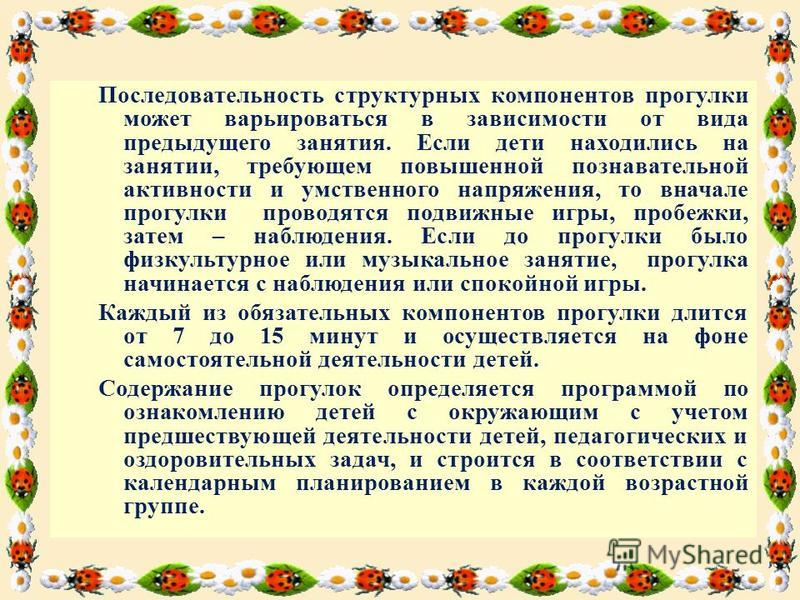
Observations Organization of observations: the process of observation can be organized for objects and weather phenomena. When planning observations, the educator thinks through: equipment and materials used during the observation, placement of children; techniques for attracting children's attention to observation (surprise moments, riddles, setting a cognitive task, a problem situation); methods of activating mental activity (search questions, actions, comparison, use of children's experience).
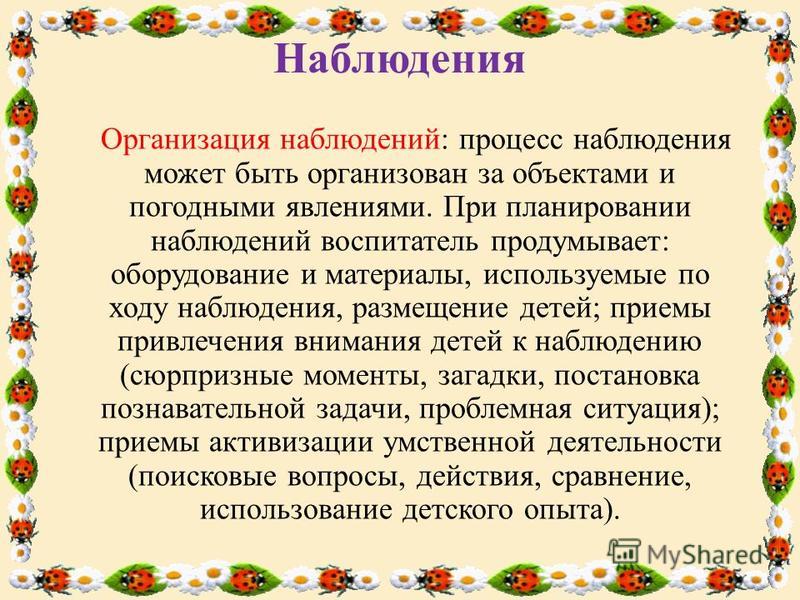
Organization of motor activity The motor activity of children on a walk should include: outdoor games and physical exercises on a morning walk: in the younger group - 6-10 minutes. On an evening walk: in the junior and middle groups - min. Outdoor games can be supplemented or replaced with sports exercises.
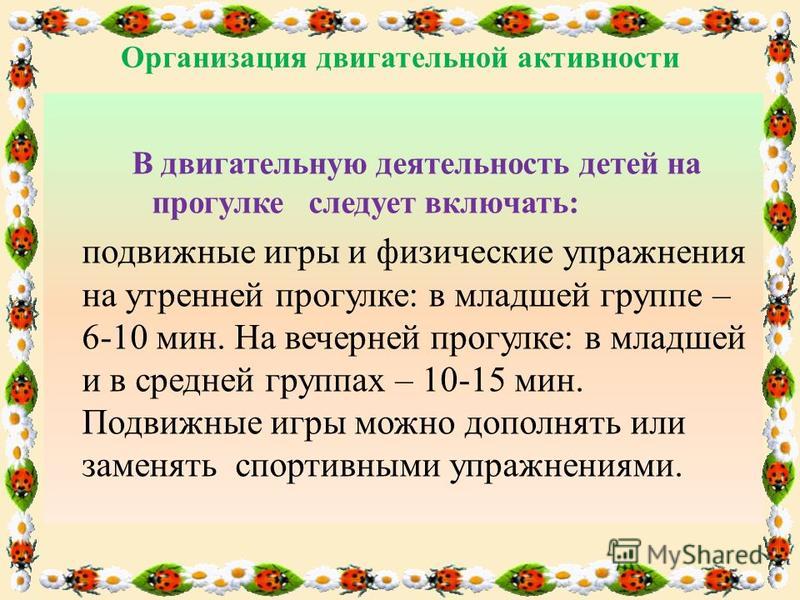
Independent physical activity The nature and duration depend on the individual needs and interests of children, the developing environment; individual tasks (in accordance with scheduling). Depending on weather conditions, children's motor activity in the air can be of varying intensity so that children do not get cold or overheat. The teacher thinks over the organization of motor activity before going for a walk, focusing on specific weather conditions. Children are not allowed to walk for a long time without moving. Children with reduced mobility, low initiative, who should be involved in outdoor games require special attention. Games with a high level of intensity of movements should not be played at the end of the morning walk before leaving the site, as children in this case become overexcited, which negatively affects the nature of daytime sleep, increases the duration of the period of falling asleep, and may cause a decrease in appetite
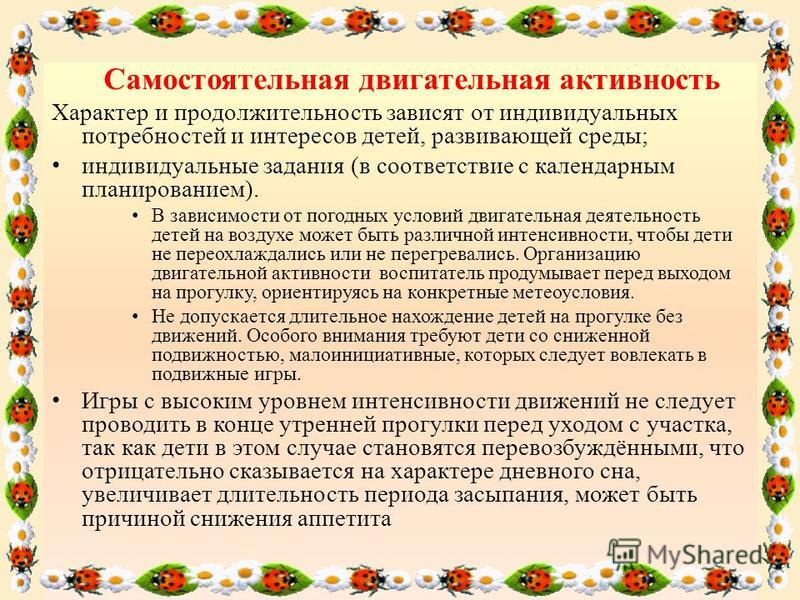
Organization of individual work in accordance with calendar planning, the educator carries out individual work on the cognitive-speech, social-personal, physical or artistic-aesthetic development of children; for this purpose prepares all necessary materials and equipment.

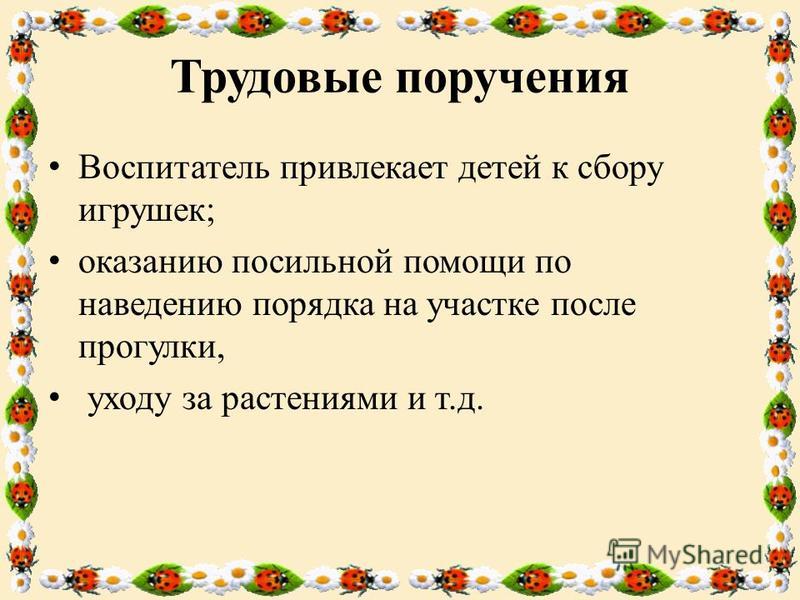
Depending on the goals and objectives of the walk, the teacher prepares the necessary portable material, manuals for various types of children's activities that meet sanitary and hygienic requirements. The teacher must manage the independent activities of the children: ensure them complete safety, teach them how to use the aids in accordance with their purpose, and constantly monitor the activities of the children throughout the walk

Return from a walk Return of children from a walk is also organized in subgroups. The assistant educator takes the first subgroup of children away from the site. The children of the second subgroup continue to walk for another 1015 minutes with the teacher. The teacher's assistant helps the children to untie scarves, unbutton and take off their outer clothing, put clothes in a locker. Having undressed, the children calmly go to the group and play. In the summer, after the children return from a walk, it is necessary to organize a hygienic procedure - washing their feet.
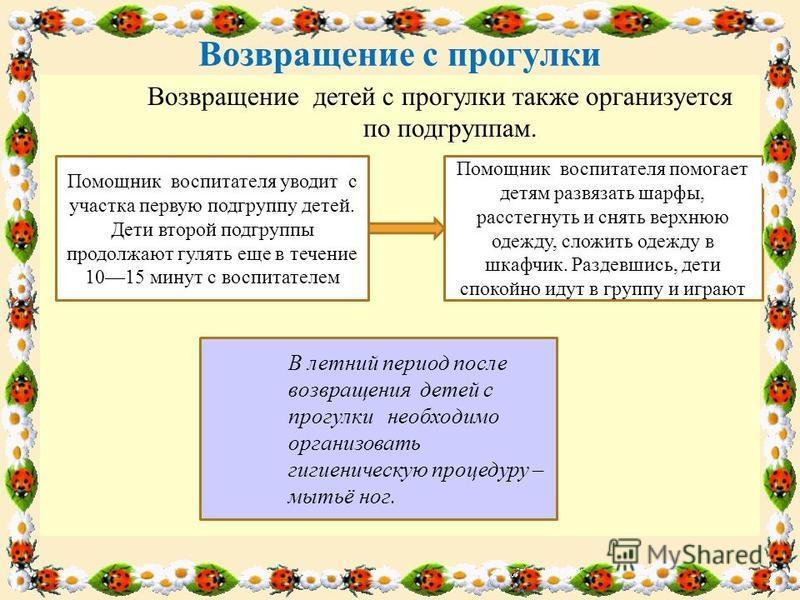
The order of storing clothes in a locker A scarf and a hat are placed on the top shelf. Jacket, gaiters, tights, warm pants, outerwear are hung on a hook. Elasticated mittens should be threaded through the sleeves and outerwear hanger. Shoes are placed on the bottom shelf, socks are placed on top.


